Tuesday will be a big day for congressional primaries in both parties. Eight states will hold primaries including Alabama, California, Iowa, Mississippi, Montana, New Jersey, New Mexico, and South Dakota. All eyes, however, will be on California. Not only is it the biggest state, it is a heavily Democratic state where Democrats will need to flip some Republican seats if they are to gain control of the House. There are five congressional districts in California which are now or have most recently been represented by Republicans and are on the Cook Political Report’s Republican Toss Up list. If Democrats can sweep these seats in November, they would be 20 percent of the way toward their goal of reclaiming a House majority, assuming they defend their current seats.
Here are five things to know going into Tuesday’s Democratic contests.
1. Half of Democratic candidates support a single-payer health care system
Since 2014, we have coded congressional candidate websites to learn more about the issues they are discussing on the campaign trail. When we drill down on the number one issue Democrats discuss, health care, we see that progressives are overwhelmingly in support of single-payer or Medicare for all while establishment Democrats tend to be in favor of protecting and improving the Affordable Care Act. Should the Democrats take over the House, these findings (so far at least) indicate what could be a very interesting conversation about the future of health care. Would a Democratic House try to improve the Affordable Care Act and expand Medicaid? Or would they scrap it for something different such as extending Medicare to everyone? Thus far Medicare for all is mostly a slogan and support for it could crumble when the details are worked out. But it is an interesting idea which will make for a powerful intra-party debate.
| Table 1: Candidate explicitly endorses single-payer health care or Medicare for all | |||
|---|---|---|---|
| All Democrats | 197 (46.9%) |
||
| Progressives | 129 (73.3%) |
||
| Establishment | 60 (34.1%) |
||
Data: Democratic congressional candidates who competed in primary contests held from March 2018 to present.
2. More progressives are running, but they’re finishing behind establishment Democrats
Tuesday’s primaries will also tell us some more about what’s going on within the Democratic Party as it redefines itself in the Trump era. Self-identified progressives have jumped into the 2018 primaries in large numbers. In primaries held so far this cycle, 42 percent of nonincumbent Democratic candidates label themselves as progressives. That number was 14 percent in 2014 and 13 percent in 2016. But in spite of their numbers progressives still run behind more establishment Democrats—a function no doubt of the fact that many of these progressives are relatively new to politics. As the following table shows, 29.6 percent of all progressive challengers won their primary or advanced to a runoff and 39.4 percent of establishment Democrats won their primary or advanced to a runoff.
| Table 2: Democratic Wins and Losses | |||||
|---|---|---|---|---|---|
| Winner | Adv. to Runoff | Loser | |||
| Progressives | 33 (21.2%) |
13 (18.4%) |
108 (70.1%) |
||
| Establishment | 48 (31%) |
13 (8.4%) |
94 (60.6%) |
||
3. Democrats share the same priorities, but progressives speak in unison
The following table identifies the top six issues discussed by Democratic congressional candidates in the primary elections held to date. Differences on issues within a political party are never very large. As the following table shows, the top six issues mentioned by both factions are identical. Progressive candidates tend to speak in unison, mentioning a standard slate of issues, which is not surprising given that these challengers tend to be more ideologically motivated. There are slight differences in priority within each faction but they are not terribly substantial with the exception of climate change which is the second most mentioned issue among progressives and the sixth most mentioned issue among establishment Democrats.
| Table 3: Top 6 Issue Positions Mentioned by Candidates | |||
|---|---|---|---|
| Progressive Candidates | Establishment Candidates | ||
| Health care/Affordable Care Act (94.3%) |
Health care/Affordable Care Act (82.2%) |
||
| Climate Change (80.7%) |
PreK-12 Education (63.8%) |
||
| Taxes (73.9%) |
Immigration (59.2%) |
||
| Gun Rights/Gun Control (72.0%) |
Gun Rights/Gun Control (54.6%) |
||
| PreK-12 Education (72.0%) |
Taxes (53.2%) |
||
| Immigration/Abortion (Tied) (68%) |
Climate Change (47.7%) |
||
4. For progressives, districts that Trump carried are the ones to watch
As the following chart indicates, the majority of progressive victories so far are in congressional districts Trump carried. Come November we will be able to test the conventional wisdom and see whether or not progressive Democrats do well in Republican-leaning districts.
 5. Top-two primaries could spell trouble
5. Top-two primaries could spell trouble
Many Democrats are fearful that in California this year the party’s strength could also turn out to be its weakness. California has what’s called a “top two” primary in which the two highest vote getters, regardless of party, advance to the general election. So the fear is that the large number of Democrats running in some of these districts could split the vote and one Republican—or worse, two Republicans—could end up on the November ballot. Party leaders, both in state and nationally, have been trying to avoid this outcome by culling the field. But we will not know how well that has worked until the votes come in on Tuesday.
Elaine C. Kamarck is a Senior Fellow at the Brookings Institution and author of Primary Politics: Everything You Need to Know about How America Nominates Its Presidential Candidates. She is a member of the Democratic National Committee and a superdelegate to the Democratic convention.
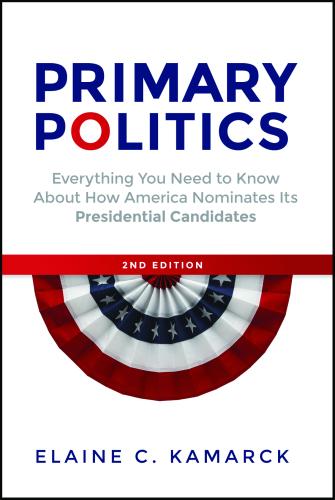
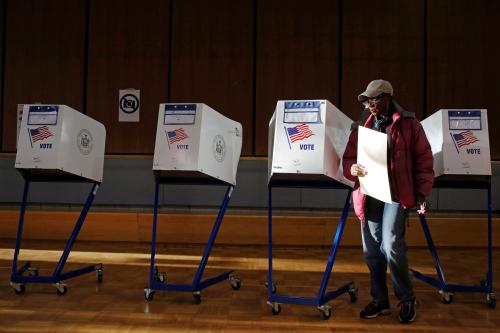
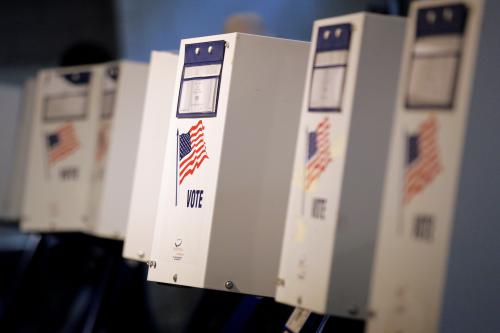
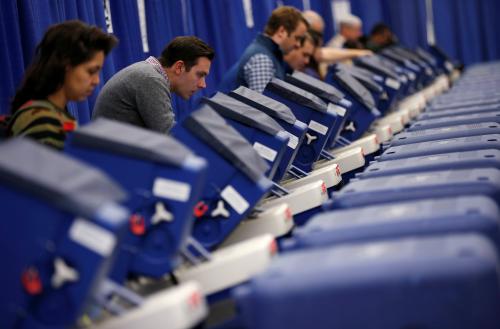



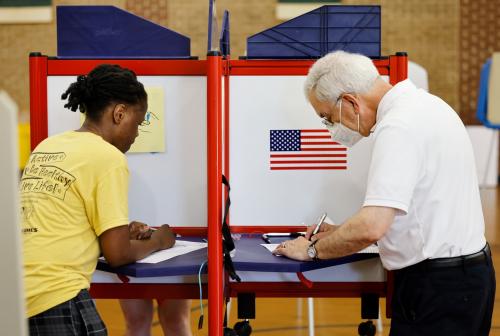

Commentary
5 things to know about Tuesday’s Democratic primaries
June 1, 2018